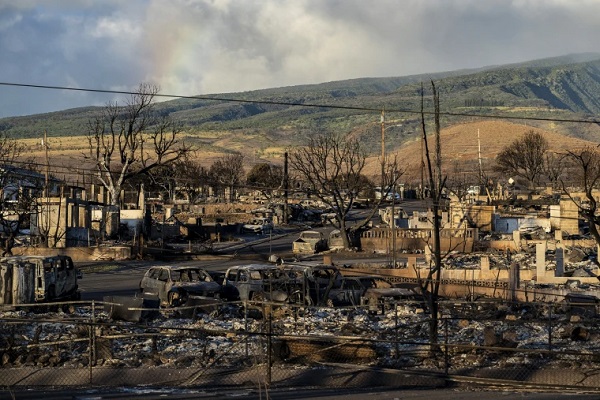Wednesday, August 16, 2023

The agony wrought by the deadliest US wildfire in a century is only beginning in Lahaina, Hawaii, where the inferno virtually wiped the town off the map.
Fear, anger and despair are setting in for some locals, who are now imploring that repair efforts should focus on not just clearing the way for tourists, but meeting the needs of the people who call Lahaina home.
What was lost
Lahaina is like no other place in the world, bordered by the turquoise Pacific Ocean on one end and green mountains on the other.
Once the royal capital of the Kingdom of Hawaii, it went on to become an agricultural hub and cultural melting pot that served as a conduit for the American dream for so many families.
After Lahaina’s historic sugar cane mill shuttered in 1999, the hospitality industry quickly took over as the main economic engine of the community.
The explosion of tourism over the years, however, has strained natural resources and astronomically driven up the cost of living – dividing the haves and have-nots in ways that felt untenable even before the fire’s devastation.
Hawaii Governor Josh Green’s office said last month that the state has the most expensive housing in country.
Homeownership has become nearly impossible for many locals, as available housing supply often gets converted into short-term rental units, hotel developments or second homes for millionaire visitors.
Half of all housing units in Lahaina are not owner-occupied, according to Census data. The median listed home price in Lahaina as of July was some $1.5 million.
Most locals in Maui work in jobs that serve tourists. Roughly one in five workers in Maui County are in the accommodation and food service sector, where the average salary is $52,322, according data released by the state.
Meanwhile, prices in Hawaii are more than 13% higher than the national average, marking the highest regional price parity in the country, per the Bureau of Economic Analysis’ measure.
As a result of all these factors and more, over half of Maui’s residents are struggling to make ends meet and are categorized as “Asset Limited, Income Constrained, Employed” (or ALICE) or below, per a 2022 study released by the local nonprofit Aloha United Way in partnership with the Bank of Hawaii.
The ALICE designation means that households earn above the federal poverty level and thus often do not qualify for public assistance, but still cannot afford basic cost of living in their county.
Relying so heavily on the tourism industry also creates fragility for Maui’s economy.
In April 2020, at the onset of the COVID-19 crises in the US and height of pandemic restrictions, the unemployment rate on Maui skyrocketed to 33.4% – more than twice the national average at the time of 14.7%.
Looking ahead, fears mount over direction of Lahaina’s future
Looking beyond just the short-term needs, there is already growing concern that developers will now try to swoop in and buy up the land where people’s homes were destroyed, possibly rebuilding Lahaina into a Las Vegas-strip style tourism base.
The fear of land grabs from outsiders trying to cash-in on the tragedy and push more local people out of Maui are very real.
Community groups have begun sharing resources, calling for people to report incidents of speculators circling their property in search of a deal.
Thousands of people have also signed multiple petitions calling for a temporary moratorium on foreclosures amid the tragedy.
Despite the decades of change as visitors reshaped much of Hawaii, Lahaina treasured its history and residents worked hard to preserve the cultural heritage that made it so unique.
Unlike the skyscrapers and luxury retail outposts on the Waikiki strip in neighboring Oahu island, Lahaina’s downtown now largely razed remained largely low-rise and dotted with small businesses built around a beloved, 150-year-old Banyan tree.
Many have characterized Lahaina, in the coverage of these fires, as a tourist mecca or tourist destination, and it’s certainly attracted the interest and love of many, many people, Ilihia Gionson of the Hawaii Tourism Authority told a news agency.
It’s also important to keep first and foremost in mind what the families of the area are going through, because it’s really in the families and in the hearts of the kama’aina, the residents of those places, that those kinds of stories, those kinds of histories live, Gionson said.
Saturday, April 27, 2024
Saturday, April 27, 2024
Saturday, April 27, 2024
Friday, April 26, 2024
Friday, April 26, 2024
Friday, April 26, 2024